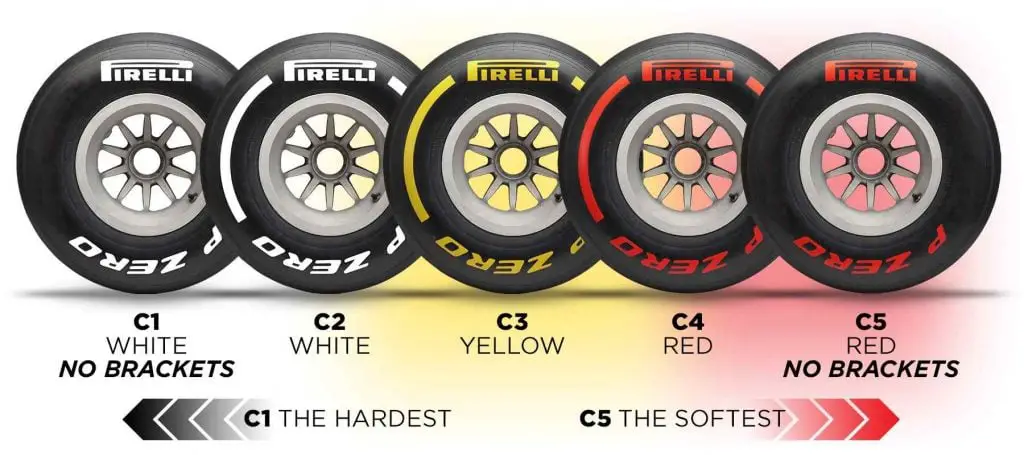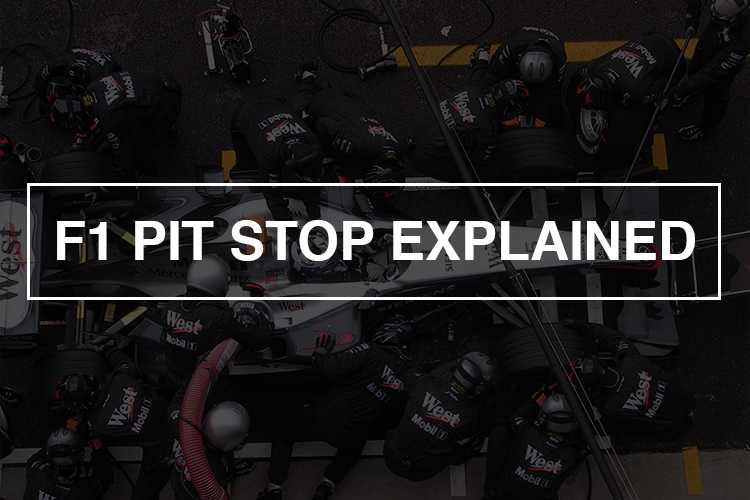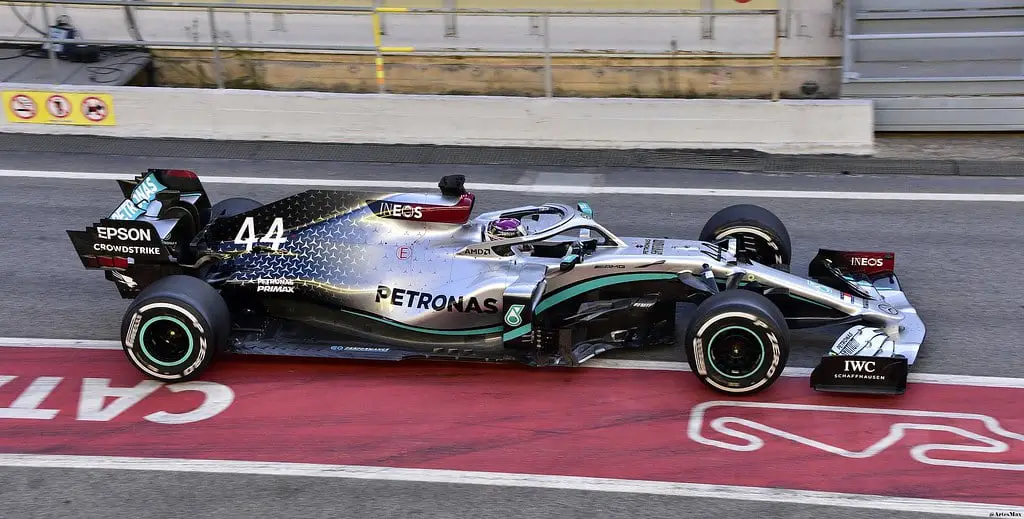Last Updated on September 23, 2023 by Pittalks
Did you know that the average F1 pit stop takes just under three seconds?
In that time, 4 tires are changed, and any necessary adjustments are made. In a sport where fractions of a second can make all the difference, pit crews have to be fast and precise.
In this blog post, we’ll take a look at:
- The basic rules of F1 pit stops
- F1 pit stop strategies
- Some of the most dramatic F1 pit stops in history
So, whether you’re a fan of F1 or just want to learn more about its key aspects, read on!
Key information: Are F1 Cars Manual?
How many pit stops in f1?
Changing tires is the major reason why an F1 driver makes a pit stop. Since F1 tires have to cope with speeds of up to 350 km/h, they’re quite delicate, and can only last for a limited time before their grip falls away.
Too many pit stops mean that too much time is wasted, but too few pit stops can be just as bad because worn tires will significantly slow the car down.
With that in mind, F1 drivers usually stop from 1 to 3 times during a race.
The other purpose of F1 pit stops was refueling. However, since 2009, it has been banned for safety and cost reasons.
Other small adjustments may be made during a pit stop but they’re not required.
Related article: F1 vs NASCAR
How many people are involved in f1 pit stop?
F1 pit stops usually involve a team of 20 people or more, these include:
- 4 Tire gunner – who pull the trigger and change tires
- 4 Tire off – remove old tires
- 4 Tire on – bring the new tires
- 2 Front jack – lift the front of the car
- 2 Rear jack – lift the car from behind
- 2 Steadier/side jack – keep the car steady
- 2 Front wing flap adjust – tune front wing angles
- 1 guy keep an eye on pit lane traffic
- At least 1 guy with a fire extinguisher
- 1 Lollipop man – this position was replaced by Lollipop light
With this many people, an average pit stop takes just 2.5 seconds. The record for the fastest F1 pit stop is 1.82 second stop performed by the Red Bull team at the 2019 Brazilian Grand Prix on Max Verstappen.
Read next: What is DRS in F1?
What does the driver do during the pit stop?
First, if a driver want to pit, he will inform his team “box, box, box”. If his team feels that a pit stop at the moment is not a good idea, they’ll say “out, out, out”.
After crossing the pit lane line, the driver must slow down and stop the car exactly at the pit box. This is because his team is already standing in the correct place and it would take too long to reposition all these people. Sometimes, the wrong pit position could be dangerous for the front jack guy. Trust me, these guys get knock to the floor all the time.
When the car completely stops, the driver puts the engine into neutral mode, presses the brake pedal, and holds the steering wheel to stop the front wheels from moving.
After his team have done the job, the driver releases the brake pedal, re-engages the first gear, and drives away. Before passing the pit lane exit line, the car must be under the speed limit, otherwise, the driver could be given a time penalty.
Read next: Are F1 Cars AWD?
What is the speed limit in pit lane F1?
The speed limit in the F1 pit lane is 80 km/h. This may seem slow, but since the pit crews are usually walking around, it’s necessary to minimize the risk of accidents.
The penalty for speeding in the pit lane is typically a drive-through, which means that the driver has to enter the pit lane and get back to the race without stopping. Or even worse, it can be a ten second time penalty, which means the driver must stop 10s in the next pit stop.
The hard part of this is that the driver need to keep the speed right below the limit. Faster, you have a penalty. Slower, well, you’re slower. To make sure drivers do not make any mistakes crossing the speed limit, there is a button on F1 steering wheels that can be used to limit the speed.
This button must be used only on the pit lane, not the track. This rule is meant to prevent drivers using the button as a traction control system (traction control and ABS has been banned by the FIA since 2008 because they consider these functions as “driver assist”, which is not challenging enough for the drivers’ driving skills.)
Related article: Why Don’t F1 Cars Have A Clutch Pedal?
F1 pit stop tires changing rules
5 slicks (dry tires) are allowed by F1 rules. They are rated from C1 (very hard) to C5 (ultra soft). Harder tires will last longer but provide less grip, whereas softer tires will wear out very quickly but provide a lot of grip, which means more speed. Choosing which types of tires are used in a race is complicated by many factors, and how to get the most out of them is science itself.
For each race, Pirelli, the sole tire supplier in F1, will choose three different types of tires that are rated between C1 and C5, plus 2 types of wet weather tires. According to FIA, at least two different types of tires must be used during the race.

In this way, the F1 teams can have a variety of tire-changing strategies to choose from, making the races much more unpredictable.
You can take a look at the video below to get a basic idea of the tire-changing strategies.
Another F1 pit stop rule is that if a tire is marked “Left front”, it must be used on the left front wheel and the same goes for the other wheels. The marks are printed on the wheel blankets, whose function is to keep the tires warm enough for proper grip.
F1 Undercut vs overcut strategies – what are they?
First, you need to know that overtaking in F1 is not easy. This is because of dirty air – when a car is right in front of you, it creates turbulence which makes your car less stable. So, if you’re behind someone and want to overtake, your car needs to be a lot faster than your opponent’s.
So, in many cases, speed is not the option, but strategy is!
Undercut and overcut are the 2 common strategies to achieve this. To understand these two concept, you need to know the fact that F1 tires will degrade during a race. So, the longer you run on the same set of tires, the less grip you have, and the slower your car is.
Undercut
This means that you get ahead of your opponent by making a pit stop before him. In this way, your car will be faster right after the pit stop (because your tires is now fresher than your opponent’s). When you re-enter the track, and your opponent pits later, you’ll have the opportunity to overtake him.
Overcut
This means that you stay on the track longer than your opponent, thus making more use of your tires. In this way, your car will be slower after your opponent pit (undercut). However, you’ll have better tires at the end of the race.
Other pit stop equipment
Jack
The front and rear jacks are used to support the car when it’s in the pit stop position. Each one costs around £250k, which is insane for a jack.
Wheel gun
The wheel gun is the device used to change tires. This tool is much more powerful than the regular impact wrenches you can find at your local mechanics. A single wheel gun costs around £23k can produce more than 3000 ft-lb at 10,000 RPM.
Tire blankets
The purpose of the tire-warming blanket is to keep the tires hot so they provide a good grip in the first place.
Do you know how much money these blankets cost? According to Essentially sports, “A racing team spends around 280,000 euros for 40 sets of blankets, which could be money well spent elsewhere. However, various F1 teams believe the Pirelli compounds in use need preheating for prolonged use.”
Top 10 craziest moments in F1 pit stops
F1 pit stop is one of the most interesting parts of the race, it’s noisy, rushing, and sometimes dangerous.
Here are some of the craziest F1 pit stop moments:
Conclusion
F1 pit stop is a really interesting and complex process. It requires speed and accuracy from both the team members and the driver himself. The timing of each step must be perfect because even one split-second too late can cost you a place at the podium (or worse). Let’s see how it goes for us in future races!
Related article
How much horsepower does an f1 car have?
Reference:
- https://bleacherreport.com/articles/2611749-why-the-return-of-refuelling-would-be-bad-for-formula-1
- https://www.motorsport.com/f1/news/insiders-guide-what-are-f1s-tyre-rules/6885458/
- https://www.formula1.com/en/latest/article.undercut-vs-overcut-why-tyre-strategy-was-so-finely-poised-in-monaco-and-why.1YYMDkEBnFols8bDWtSXiz.html
- https://motorsporttickets.com/blog/f1-pit-crew-what-each-member-does-during-a-formula-1-pit-stop/
- http://www.formula1-dictionary.net/pitlane_speed_limiter.html


